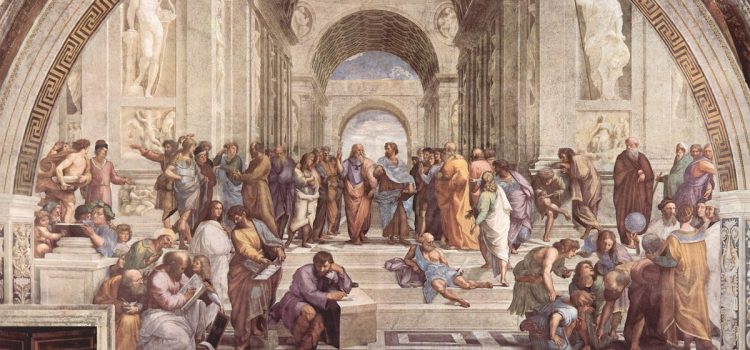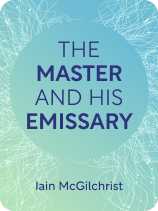

This article is an excerpt from the Shortform book guide to "The Master and His Emissary" by Iain McGilchrist. Shortform has the world's best summaries and analyses of books you should be reading.
Like this article? Sign up for a free trial here.
What can we learn about the brain by studying history? What do the Classical period, the Renaissance, and the Romantic era have in common?
Contrary to popular opinion, Iain McGilchrist contends that the left brain hemisphere should be subservient to the right. He contends that three historical eras embody the primacy of the right hemisphere: classical antiquity, the Renaissance, and Romanticism.
Read on to get a new perspective on history by seeing it through the lens of right hemisphere dominance.
Right Hemisphere Dominance Throughout History
McGilchrist asserts that the incredible art and literature produced during the classical period, the Renaissance, and the Romantic era is evidence of right hemisphere dominance during those times. Before we dive into the details, it’s worth clarifying what McGilchrist means when he says that an era can embody hemispheric dominance (and that this embodiment can change over time from one hemisphere to the other). McGilchrist attributes such embodiment to mimesis, a process by which we empathetically imitate certain ways of thinking present in our surroundings, leading to functional shifts in our brain.
For example, though an infant’s brain has the structural hardware needed to process both implicit and explicit meaning, if that infant is surrounded by people who emphasize explicit over implicit meaning, the process of mimesis could sharpen the brain’s function for processing explicit meaning and weaken its function for processing implicit meaning. In this way, McGilchrist says, different functions associated with the left and right hemispheres can become entrenched in different historical eras.
(Shortform note: While McGilchrist applies the concept of mimesis to imitating brain functions in particular, mimesis was originally applied to art and poetry. Indeed, Aristotle argued that the primary goal of an artist was to reflect reality by imitating it—thus, through mimetic imitation, the artist captures the essence of reality in art.)
Era #1: The Classical World
The first period that McGilchrist analyzes is the classical period, which lasted from the 8th century B.C. in Greece until the 5th century A.D. in Rome. He argues that most of the classical period demonstrates the proper level of right hemisphere dominance, as shown by classical art, literature, and philosophy.
First, McGilchrist examines how classical portraits displayed the human face, arguing that their emphasis on individuality is evidence of the right hemisphere’s primacy. He writes that, before antiquity, Egyptian depictions of faces lacked expression and were often abstracted from any individual face—all hallmarks of the left hemisphere. Around the 4th century BC, however, faces grew more emotional and diverse, suggesting an emphasis on the individual that’s strongly associated with the right hemisphere.
(Shortform note: While Egyptian portraits regularly draw negative comparisons to later Greek portraits, experts point out that Egyptian portraiture had a markedly different function than Greek portraiture, which partially explains its different style. Egyptian portraits were typically meant to adorn deceased individuals’ tombs and accompany them to the afterlife, so they weren’t intended to be seen by the public. Hence, Egyptian portraits didn’t need the same degree of detail as Greek portraits, since they were largely functional rather than aesthetic.)
Next, McGilchrist discusses the Homeric epics—the Iliad and the Odyssey—and writes that they exemplify the right hemisphere’s capacity for empathy. These epics, he argues, demonstrated a keen insight into the thought processes of their characters, showing a new degree of psychological depth.
(Shortform note: With respect to Homer’s Odyssey in particular, psychiatrist Jonathan Shay has argued that Homer captures the nature of post-traumatic stress disorder (PTSD) through Odysseus’s experience both in, and after, battle. In Odysseus in America, he details the lessons that the US military and public can learn from the Odyssey about PTSD among veterans.)
Finally, McGilchrist examines early Greek philosophy—especially that of Heraclitus, a Greek philosopher who lived around 500 B.C.—to show that it reflects the right hemisphere’s preference for unity and the implicit. Heraclitus held that the true structure of nature is hidden, and any attempt to explicitly define it using language and logic is bound to fail. He argued that to understand this structure, we must carefully monitor our perceptions, which allows us to see “the unity of opposites” that underlies nature. According to McGilchrist, Heraclitus’s preference for the implicit, for our perceptions, and for unity are all characteristic of the right hemisphere.
(Shortform note: Though McGilchrist presents Heraclitus as an exemplar of classical philosophy, among his peers, Heraclitus was known for his terse prose that was intentionally ambiguous and more akin to poetry than traditional philosophy. For this reason, later Greek philosophers such as Plato and Aristotle would even deem Heraclitus’s work self-contradictory and incoherent since it didn’t embody the clarity that they expected.)
Era #2: The Renaissance
Although classical antiquity occurred some two millennia before the Renaissance—the period between about the 14th and 17th century AD in Europe–McGilchrist contends that the Renaissance represented a return to the hemisphere balance of the classical world. He argues that the Renaissance achieved the ideal right hemisphere primacy, as shown by its art and Shakespearean theater.
Regarding Renaissance art, McGilchrist notes that Renaissance artists rekindled perspective in paintings—that is, representing three-dimensional objects to generate the illusion of depth—after it had been absent for over a millennium. He argues that these perspective paintings suggest the ability to see the world in context, as the right hemisphere prefers, rather than the detached view that’s associated with the left hemisphere, as seen in certain medieval religious art that abstracts space and proportion.
(Shortform note: Renaissance art both influenced and was influenced by an intellectual movement known as humanism that harkened back to classical antiquity and exalted the human form. This close association with humanism shaped several aspects of Renaissance art. For example, it increased the social status of artists, who began to be viewed as intellectuals rather than mere craftsmen. Moreover, rather than treating the body as something to be hidden, humanism led to an unabashed emphasis on the human body in Renaissance art.)
With respect to Renaissance theater, McGilchrist argues that the Shakespearean plays that highlighted Renaissance-era drama displayed several strengths of the right hemisphere. For example, Shakespearean characters subvert the standard categories that the left hemisphere sorts individuals into. And at a broader level, Shakespeare’s tendency to mix different genres shows a similar distaste for the left hemisphere’s categorization.
(Shortform note: In particular, Shakespeare was responsible for popularizing the dramatic pastiche known as the tragicomedy, a genre of play that interspersed both tragic and comic elements. For example, tragicomedies might involve genuine danger to the protagonist, as well as farcical scenes designed to create a sense of levity. Of Shakespearean plays in particular, experts point out that The Merchant of Venice constitutes a tragicomedy since one of the primary plotlines is a comedy, while the other is a tragedy.)
Era #3: Romanticism
Although the Renaissance represented the optimal balance between the hemispheres, it wasn’t the most recent historical period to favor right-hemisphere tendencies—that achievement belongs to Romanticism, the European intellectual and artistic movement in the early to middle 19th century. Citing examples from Romantic art and literature, McGilchrist argues that Romanticism embodied the primacy of the right hemisphere.
First, McGilchrist asserts that landscape paintings formed the cornerstone of Romantic art, especially those of Claude Lorrain. Lorrain’s landscape paintings, he argues, were noteworthy for their unique depth, which couldn’t be grasped by the left hemisphere alone; after all, the left hemisphere focuses on minute details rather than the bigger picture. Moreover, McGilchrist writes that like Renaissance perspective paintings, Lorrain’s landscapes show a distinctly human perspective on the world—not the “objective” view that the left hemisphere prefers, but the embodied view that’s distinctive of the right hemisphere.
(Shortform note: More generally, one crucial commitment of romantic art was the primacy of the aesthetic—roughly put, the notion that art and aesthetic beauty are fundamental to the human condition. Although this commitment is often viewed in opposition to Enlightenment ideals such as the sovereignty of reason, other experts contend that Romantic artists desired a union of beauty and reason; in elevating the importance of the aesthetic, they claim, Romantic artists only sought to level the playing field.)
Apart from art, McGilchrist suggests that Romantic-era literature reveals the right hemisphere’s influence through its expression of melancholy and yearning. For example, English poet William Wordsworth’s poetry conveys a longing for the past coupled with sadness that it’s irretrievable—emotions felt most strongly in the right hemisphere. In a similar vein, McGilchrist argues that German author Johann Wolfgang von Goethe captured this sense of longing through poems like “Nur wer die Sehnsucht kennt” (“Only he who knows yearning”).
(Shortform note: In Germany, one influential literary movement in the 1770s and 80s foreshadowed many of the literary developments of Romanticism: Sturm und Drang (“Storm and Stress”). This movement, which is associated with Goethe, among others, elevated the importance of intense subjective emotions—especially tragic emotions like grief and loss—above the Enlightenment’s objective rationality, setting the stage for later Romantic literature.)

———End of Preview———
Like what you just read? Read the rest of the world's best book summary and analysis of Iain McGilchrist's "The Master and His Emissary" at Shortform.
Here's what you'll find in our full The Master and His Emissary summary:
- How pop psychology has given us the wrong impressions of the brain's hemispheres
- Why the right hemisphere is actually more important than the left
- What would happen if left-hemisphere thinking took over the world






